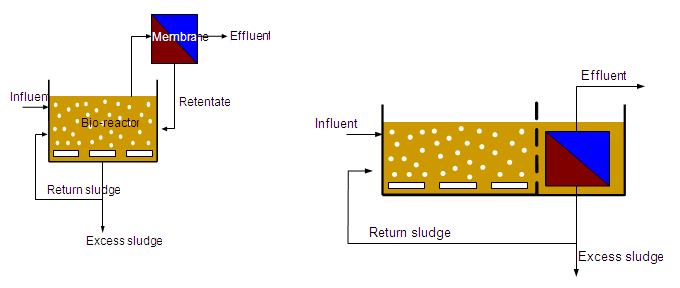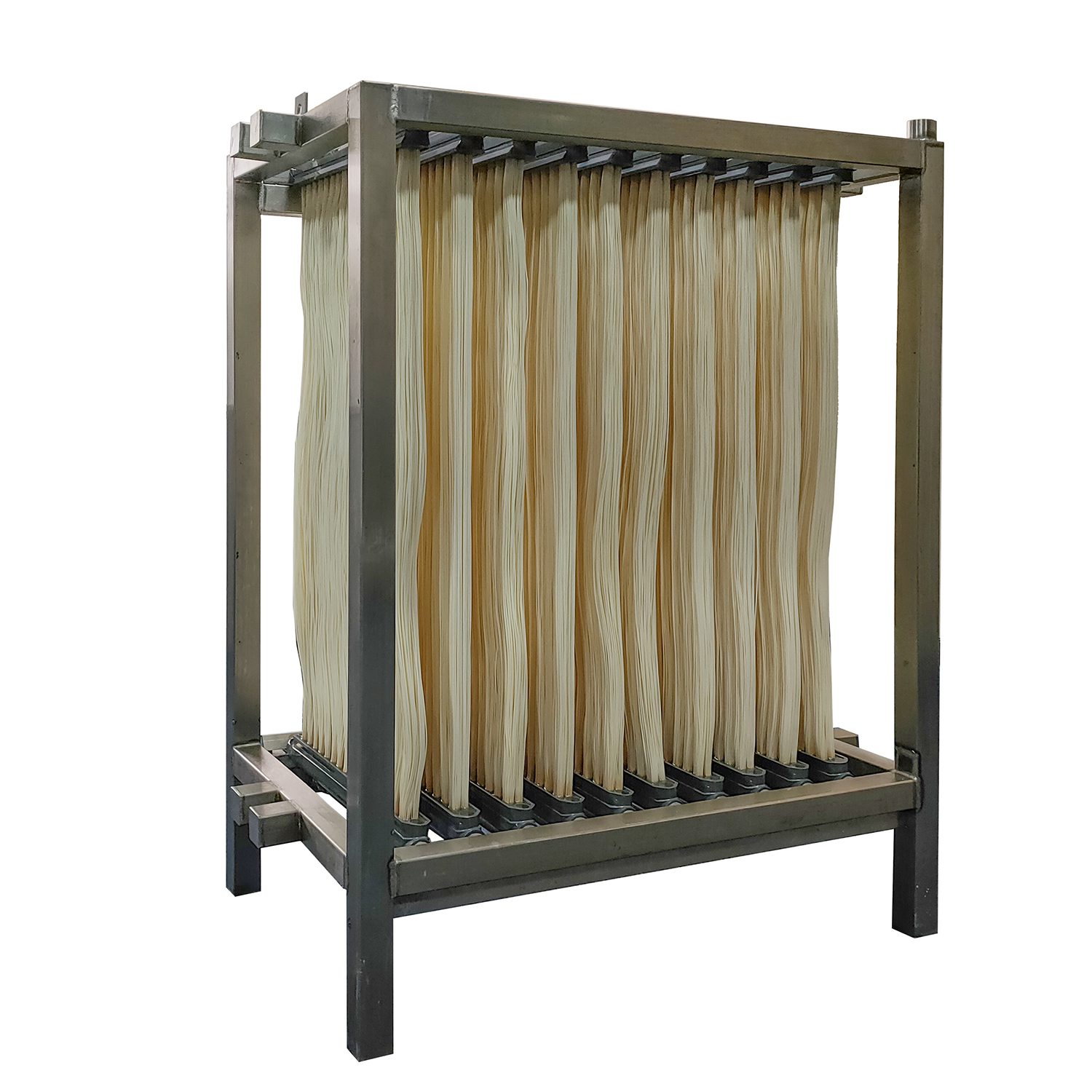How Membrane Bioreactor Contributes to the Reduction of Energy Consumption in Water Treatment
How Membrane Bioreactor Contributes to the Reduction of Energy Consumption in Water Treatment
Blog Article
The Benefits of Membrane Layer Bioreactors in Lasting Wastewater Management
Membrane bioreactors (MBRs) stand for a crucial advancement in sustainable wastewater monitoring, efficiently combining organic therapy with advanced membrane filtration modern technology. As the demand for lasting solutions intensifies, checking out the complex advantages of MBRs might reveal unforeseen effects for the future of wastewater therapy systems.
Overview of Membrane Layer Bioreactors
Membrane bioreactors (MBRs) represent a significant innovation in wastewater therapy technology, integrating organic deterioration with membrane layer filtering to enhance the performance of the therapy procedure. This ingenious system integrates the benefits of traditional turned on sludge processes with membrane technology, enabling enhanced solid-liquid separation. MBRs use semi-permeable membranes to separate cured water from biomass, leading to top quality effluent that can be recycled or securely released into the atmosphere.
The functional design of MBRs normally involves a bioreactor where bacteria damage down raw material, followed by a membrane system that filterings system the blended alcohol. This configuration not only reduces the footprint of the treatment center yet also enables for higher biomass concentrations and minimized hydraulic retention times. MBRs are qualified of treating a larger variety of pollutants, including nutrients and virus, making them ideal for various applications, from community wastewater treatment to industrial effluent processing.
The assimilation of MBRs into wastewater management systems is a sign of an expanding pattern towards lasting and effective methods in ecological engineering. Their ability to generate top quality effluent while reducing space requirements placements MBR technology as a principal in modern-day wastewater therapy remedies.
Improved Effluent High Quality

The membrane layer filtering procedure functions as a physical barrier, making it possible for the retention of bacteria and particulate matter, which adds to a clearer and cleaner effluent (Membrane Bioreactor). MBRs run at greater biomass focus than conventional activated sludge systems, promoting more reliable biodegradation of toxins. This brings about a reduction in biochemical oxygen need (FIGURE) and complete put on hold solids (TSS) degrees in the final effluent
Furthermore, MBRs show outstanding performance in dealing with difficult wastewater structures, such as industrial effluents and wastewater with high nutrient lots. Therefore, the effluent generated is typically of better, permitting more flexible disposal choices and decreased environmental impact. Inevitably, the improved effluent top quality achieved via MBR technology highlights its important duty beforehand lasting wastewater management techniques.
Water Reuse Opportunities
The top quality effluent produced by membrane bioreactors (MBRs) opens up considerable possibilities for water reuse in different applications. MBRs efficiently remove impurities, including virus, put on hold solids, and raw material, leading to treated water that fulfills or surpasses regulatory criteria for reuse. This high quality allows for the execution of water reusing campaigns throughout diverse industries.
One prominent application remains in farming, where treated wastewater can be made use of for watering, promoting sustainable farming methods while conserving fresh water sources. Furthermore, MBR-treated effluent can be utilized for industrial processes such as air conditioning, cleaning, and as a procedure water source, substantially reducing the demand for safe and clean water in these operations.
In city atmospheres, MBRs assist in making use of recovered water for landscape watering, toilet flushing, and various other non-potable usages, adding to the overall durability of supply of water systems. The you could look here combination of MBR technology in decentralized systems aids in handling localized water demands, especially in water-scarce regions.
Decreased Environmental Effect
Just how can the fostering of membrane layer bioreactors (MBRs) contribute to a minimized environmental impact in wastewater administration? MBRs significantly boost the therapy effectiveness of wastewater while decreasing eco-friendly disruptions. Membrane Bioreactor.
Additionally, MBRs operate at lower hydraulic retention times compared to standard systems, causing smaller sized therapy plant footprints. This compact style lowers land use, thereby protecting natural habitats and biodiversity. The process additionally creates less sludge than standard methods, reducing disposal obstacles and decreasing greenhouse gas exhausts connected with sludge administration.
Furthermore, MBRs assist in the recovery of useful sources, such as water and nutrients, adding to a circular economic climate. By making it possible for water reuse for watering or commercial procedures, MBRs aid reduce freshwater deficiency, therefore promoting sustainable water make use of techniques. Ultimately, the fostering of MBR innovation stands for a substantial stride towards decreasing the ecological effect of wastewater monitoring systems.
Economic Advantages of MBRs

Additionally, MBRs facilitate the manufacturing of top notch effluent, which can be reused for various applications, such as farming watering and commercial procedures - Membrane Bioreactor. This reuse capacity can dramatically lower water procurement costs, providing an economic reward for markets facing rigorous water laws
The small design of MBR systems additionally causes click here now decreased land requirements, which is specifically useful in urban locations where realty is costly. By decreasing area, markets and towns can save money on land procurement and upkeep expenses.
In addition, MBRs commonly require much less frequent upkeep and have a longer life-span than standard systems, further adding to cost financial savings. In summary, the financial advantages of MBRs-- varying from reduced functional prices to land cost savings and effluent reuse-- make them an engaging choice for lasting wastewater management, using both lasting and immediate economic benefits.
Conclusion
Additionally, MBRs contribute to reduced environmental influences via portable layouts and reduced sludge generation. Economic advantages even more improve their practicality, making MBRs a promising service for dealing with the challenges of wastewater therapy and advertising lasting resource management.
Membrane layer bioreactors (MBRs) stand for an essential improvement in sustainable wastewater management, properly combining biological treatment read more with innovative membrane layer filtration technology.Membrane bioreactors (MBRs) stand for a considerable improvement in wastewater therapy innovation, integrating organic deterioration with membrane purification to improve the efficiency of the therapy process.Achieving boosted effluent high quality is one of the most significant benefits of making use of membrane layer bioreactors (MBRs) in wastewater therapy.Furthermore, MBRs show exceptional performance in treating challenging wastewater compositions, such as commercial effluents and wastewater with high nutrient loads.Incorporating membrane layer bioreactors (MBRs) into wastewater administration not only lowers environmental impact yet additionally provides significant economic advantages.
Report this page